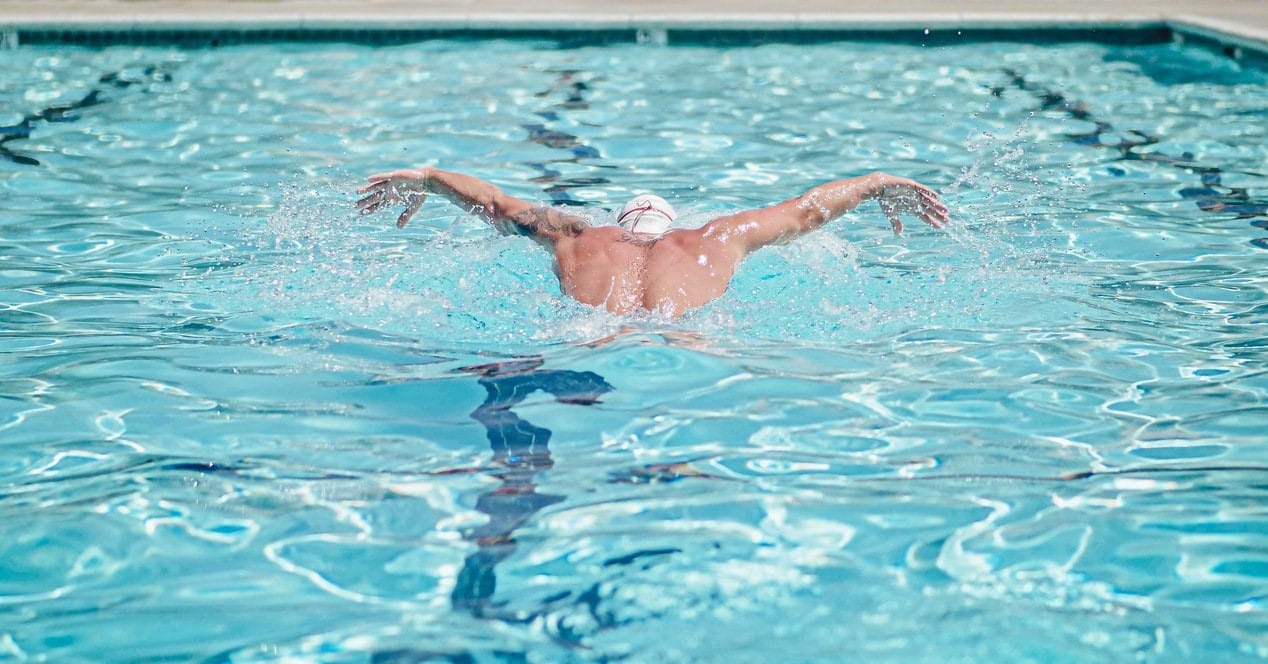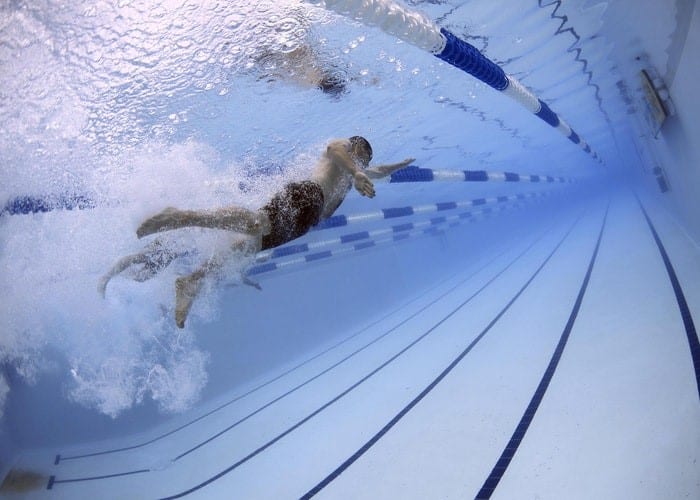
Many times we get into the water first and swim a few lengths slowly and calmly, but that is not the best warm-up for swimming. The good thing about training swimming is that we do not hurt our joints since it is not a high-impact sport, which is why many believe that warming up and stretching are not necessary, and we already anticipate that they are.
Swimmers use almost every muscle in the body to stay afloat and perform exercises, which is why we need to do a thorough warm-up and stretch well, both before and after training.
The swimming warm-up is divided into 2 parts, one in dry land and the other in the water, both are equally important and at this point there is something we want to say again, and that is, if we feel any kind of pain, dizziness, we feel bad, we have nausea, or something similar, it is best not to train today, no matter how much we want to beat our own mark, to reach our goal or, even if we only do it to leave the house.
Water is treacherous terrain, and if we pass out or lose strength, get dizzy or something like that, we can swallow water and drown if no one is around to rescue us. This is why we must take extreme precautions, just as if we are lifting a lot of weight and suddenly our arm fails and we can break a rib. By this we mean that training and playing sports is important, but you have to know what your limit is and know when to stop and rest.
Warm-up routine out of the water
Depending on the intensity of our swimming training, this is how our swimming warm-up should be. As a general rule, the warm-up usually lasts about 10 or 15 minutes, because it is not only about activating the heart and muscles, but about stretching the back, arms, legs and others.
- Move the neck slowly: The cervicals also have to be warmed up, in fact, we encourage you to do gentle turns several times throughout the swimming warm-up. You have to look up, down, right and left several times in a smooth manner.
- Arm circles: We stand up straight and begin to spin with our arms as if it were the propeller of an airplane. We try to keep a smooth pace and we are like this for half a minute. We can do both arms at the same time, or first one and then the other.
- Chest opening and arms crossed: We remain upright and now we extend our arms horizontally and bring them forward keeping our arms straight. We continue to move and try to get as far back as we can. Another exercise is in the same position and try to clap back and another in front.
- Forward and backward curve: With our legs straight we try to hug them at the ankle or wherever we arrive. That to stretch the back. Then to stretch the torso we stand straight and try to curve back as far as we'll go. We take deep breaths and try to hold on for as long as we can, no more than 1 minute.
- Jack position: It is a well-known posture because it helps to stretch the back. We place ourselves on all 4 legs on a flat and smooth surface and we rock back and forth so that the knees flex and the entire back is stretched. This position is often called the quadruple rocker.
- Knee bending: We make a stride, we maintain the balance with the legs at 90 degrees and we stretch up the opposite arm to the knee that is close to the ground.
- Leg swing: This exercise is very simple and we can rest our arms on the wall and swing one leg and then the other.

heating inside the water
Once the warm-up for swimming out of the water is over, we take a shower to warm up the body and get into the water. Once in our swimming lane, we will indicate a short warm-up to get your muscles and heart moving.
It should be said that this warm-up will vary from the type of training that we are going to do, it is not the same to swim out of boredom or to do some sport, than to be professional swimmers and have a competition next week. By this we mean that the amounts that we are going to put below are generic and that we can adapt them to our swimming warm-up.
- 50 meter crawl.
- 50 meter breaststroke.
- 50 meters back.
- 50 meter butterfly.
There is another type of less intensive swimming warm-up for those who do not have as much practice with this sport, do not defend themselves well in the water or do not have as much lung capacity or physical resistance.
It consists of holding on to a foam board with your arms outstretched and doing a length just moving your feet, a length with your legs together and another in "frog" mode. The other part of the swimming warm-up would be to keep the legs fixed and help us with the arms to get from one end of the pool to the other. On this occasion, a churro, board, sleeve or something that helps keep the legs afloat is usually used.
Post workout stretching
It is a very important part of the training, almost as much or more than the swimming warm-up. In this case, not only the group of muscles that we have trained must be stretched, but the whole body must be stretched.
There are many exercises that coincide with the warm-up, but there are others that are different. The stretches are standard, that is, there is nothing specific for swimming, so surely the exercises are familiar to us.
- Neck: we must pull it very gently in all directions and hold it in each direction for about 20 seconds.
- Arms: we can stretch them upwards intertwining our fingers, also downwards and touch the ground, thus stretching our backs on the way. Another stretch would be to raise the arm and pass it over the head until our hand touches the back, hold the position for about 20 seconds.
- Shoulders: we put one arm horizontally on the chest and stretch the shoulder and shoulder blade, and then the other.
- Trunk: slowly rotate the trunk until the back cracks, return to the front and turn to the opposite side and so on up to 6 times. When we turn and reach the top, hold the position for a few seconds.
- Legs: grab a foot from behind and pull up and hold the position as long as we can, no more than 2 minutes. Another stretch would be to sit on the floor, put your legs in a V and try to touch one shoe and then the rack or both at the same time with your legs straight forward.